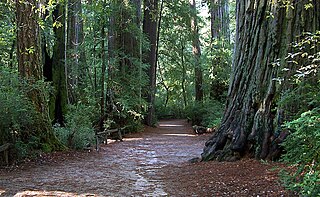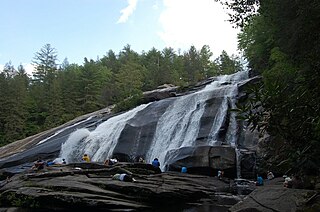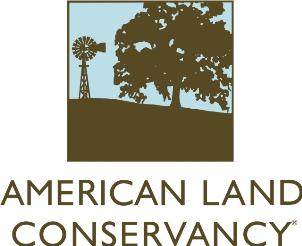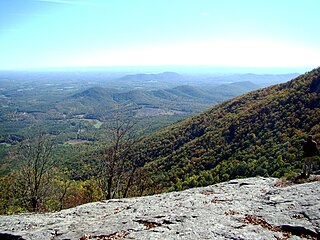Related Research Articles
Land trusts are nonprofit organizations which own and manage land, and sometimes waters. There are three common types of land trust, distinguished from one another by the ways in which they are legally structured and by the purposes for which they are organized and operated:

The Nature Conservancy (TNC) is a global environmental organization headquartered in Arlington, Virginia. As of 2021, it works via affiliates or branches in 79 countries and territories, as well as across every state in the US.

The Cache River is a 92-mile-long (148 km) waterway in southernmost Illinois, in a region sometimes called Little Egypt. The basin spans 737 square miles (1,910 km2) and six counties: Alexander, Johnson, Massac, Pope, Pulaski, and Union. Located at the convergence of four major physiographic regions, the river is part of the largest complex of wetlands in Illinois. The Cache River Wetlands is America's northernmost cypress/tupelo swamp and harbors 91 percent of the state's high quality swamp and wetland communities. It provides habitat for more than 100 threatened and endangered species in Illinois. In 1996, the Cache was designated a Wetland of International Importance by the Ramsar Convention.

Sempervirens Fund, originally established in 1900 as Sempervirens Club, is California's oldest land trust. Founder Andrew P. Hill’s goal was to preserve the old-growth forest that became Big Basin Redwoods State Park, the first California state park in 1902. Sempervirens Fund's mission is to protect and permanently preserve coast redwood forests, wildlife habitat, watersheds, and other important natural features of California's Santa Cruz Mountains, and to encourage people to appreciate and enjoy this environment. Sempervirens Fund does this by purchasing land for protection and transferring it to state or local agencies. Sempervirens Fund has also worked to establish conservation easements and trail linkages between parks and coastal marine preserves. As of 2013, Sempervirens Fund has saved more than 34,000 acres of redwood lands.

The Western Pennsylvania Conservancy (WPC) is a private nonprofit conservation organization founded in 1932 and headquartered in Pittsburgh, Pennsylvania. WPC has contributed land to 12 state parks and conserved more than a quarter million acres of natural lands. The Conservancy plants and maintains more than 132 gardens in 20 Western Pennsylvania counties, as well as planting thousands of trees through its community forestry program. WPC has protected or restored more than 3,000 miles (4,800 km) of rivers and streams. In 1963, Edgar Kaufmann Jr. entrusted Frank Lloyd Wright's masterwork Fallingwater to the Conservancy. The house was called the most important building of the 20th century by the American Institute of Architects.

DuPont State Recreational Forest, commonly known as DuPont Forest, is a 12,500-acre (51 km2) state forest, located in Henderson and Transylvania counties of North Carolina. The name originates from the fact that the DuPont company arranged the sale of the original tract to the state. Adjacent tracts have since been purchased and added to the state forest. Portions of the forest formerly contained a manufacturing facility for the production of X-ray film. The forest was used to shoot scenes from the 1992 film The Last of the Mohicans as well as the 2012 box office hit The Hunger Games. On February 12, 2019, the forest added 402 acres (1.63 km2) from Conserving Carolina, part of a section called the Continental Divide Tract that connects with other public lands. 314 more acres was added to the forest in 2019.

The American Land Conservancy was an American non-profit organization whose goal was to protect the natural environment.

According to the California Protected Areas Database (CPAD), in the state of California, United States, there are over 14,000 inventoried protected areas administered by public agencies and non-profits. In addition, there are private conservation areas and other easements. They include almost one-third of California's scenic coastline, including coastal wetlands, estuaries, beaches, and dune systems. The California State Parks system alone has 270 units and covers 1.3 million acres (5,300 km2), with over 280 miles (450 km) of coastline, 625 miles (1,006 km) of lake and river frontage, nearly 18,000 campsites, and 3,000 miles (5,000 km) of hiking, biking, and equestrian trails.

Piedmont Land Conservancy (PLC) is a nonprofit conservation land trust and charitable organization operating in nine northern Piedmont North Carolina counties – Alamance, Caswell, Forsyth, Guilford, Randolph, Rockingham, Stokes, Surry and Yadkin. PLC’s land protection priorities are watersheds, farmland, urban green spaces and natural heritage sites as defined by the North Carolina Department of Environment and Natural Resources.
Saline Wetlands Conservation Partnership (SWCP) is a conservation program devoted to the protection and preservation of Nebraska’s Eastern Saline Wetlands. Limited to the floodplain swales and depressions within the Salt Creek, Little Salt Creek, and Rock Creek drainages, it is estimated that the Eastern Saline Wetlands once covered an area in excess of 200,000 acres (810 km2). Recently, due to extensive degradation, draining and filling through commercial, residential, and agricultural development, less than 4,000 acres (16 km2) remain, and many of these remnants are highly degraded. It is becoming increasingly important to preserve this unique wetland resource. Although several existing programs have been recognized to address saline wetland conservation needs, they alone have not been enough to ensure the long term protection of this endangered resource. The Saline Wetland Conservation Partnership (SWCP) was created to offer additional protection and management of the state’s diminishing saline wetlands.
California Rangeland Trust is a conservation nonprofit organization founded in 1998. The Rangeland Trust claims to be the largest land trust in California, having conserved over 371,000 acres (1,500 km2) of rangeland on 90 ranches across 26 counties.

The Land Conservancy of San Luis Obispo County (LCSLO) is a non-profit land trust organization that has been operating in San Luis Obispo County, California since 1984. The LCSLO is dedicated to the voluntary and collaborative preservation and improvement of lands that hold significant scenic, agricultural, habitat, and cultural values. Their work aims to benefit both the local community and wildlife that depends on these lands.
The North Branch Land Trust is a conservation easement group that aims to buy the developing rights to land in the Back Mountain area of the Northeastern part of Pennsylvania. The North Branch Land Trust was established in 1993 and has grown from one conserved property a year to over 12,000 acres of conserved land. The watersheds affected by the NBLT are the Susquehanna River and Delaware River watersheds.
The Land Trust for Tennessee is an non-profit conservation organization working to protect Tennessee's natural, scenic, and historic landscapes and sites. Since 1999, The Land Trust has conserved more than 135,000 acres (550 km2) of land across 65-plus Tennessee counties.

The Big Sur Land Trust is a private 501(c)(3) non-profit located in Monterey, California, that has played an instrumental role in preserving land in California's Big Sur and Central Coast regions. The trust was the first to conceive of and use the "conservation buyer" method in 1989 by partnering with government and developers to offer tax benefits as an inducement to sell land at below-market rates. Since 1978, with the support of donors, funders and partners, it has conserved over 40,000 acres through conservation easements, acquisition and transfer of land to state, county and city agencies. It has placed conservation easements on 7,000 acres and has retained ownership of over 4,000 acres.
Headwaters State Forest is a 6,730-acre (27.2 km2) state forest, located in Transylvania County, North Carolina, along the South Carolina state line and is part of a larger 100,000+ acre conservation corridor that stretches some 80 miles along the state line. The name originates from the fact that the forest contains the headwaters of East Fork of the French Broad River. The North Carolina Forest Service primarily manages the forest for water and soil quality, as well as protecting rare species; however, primitive recreational uses are permitted.

The Deschutes Land Trust is a private charitable conservation organization focused on preserving natural landscapes and rivers in the Deschutes River Basin in Oregon, US. The Trust was formed in 1995, and since then has grown to conserve more than 7,000 hectares of land in over 17 preserves.
Florence Nature Preserve is a publicly-accessible privately owned park in Gerton, Henderson County, North Carolina in the United States. The 600-acre (2.4 km2) park is located 18 miles (29 km) southeast of Asheville, North Carolina, and is owned and managed by Conserving Carolina, a land trust.
References
- ↑ History of CMLC
- ↑ Private Land Owner's Network [ permanent dead link ]
- ↑ Land Trust Alliance Press Release on CMLC Archived December 20, 2010, at the Wayback Machine
- ↑ Article on Dr. Tom and Glenna Florence from the Times-News Archived October 31, 2008, at the Wayback Machine
- ↑ U.S. Fish and Wildlife Service Strategic Plan Appendix A Archived November 4, 2008, at the Wayback Machine
- ↑ Lewis Creek article from the Hendersonville Times-News
- ↑ CMLC Volunteer Page